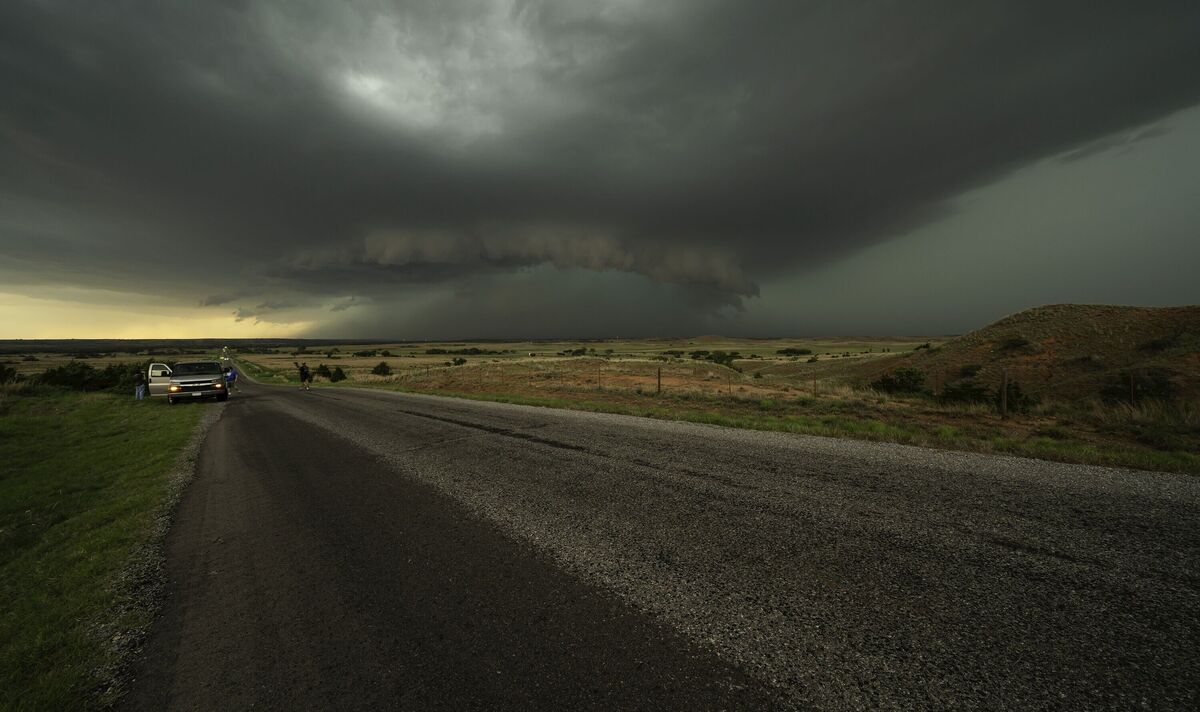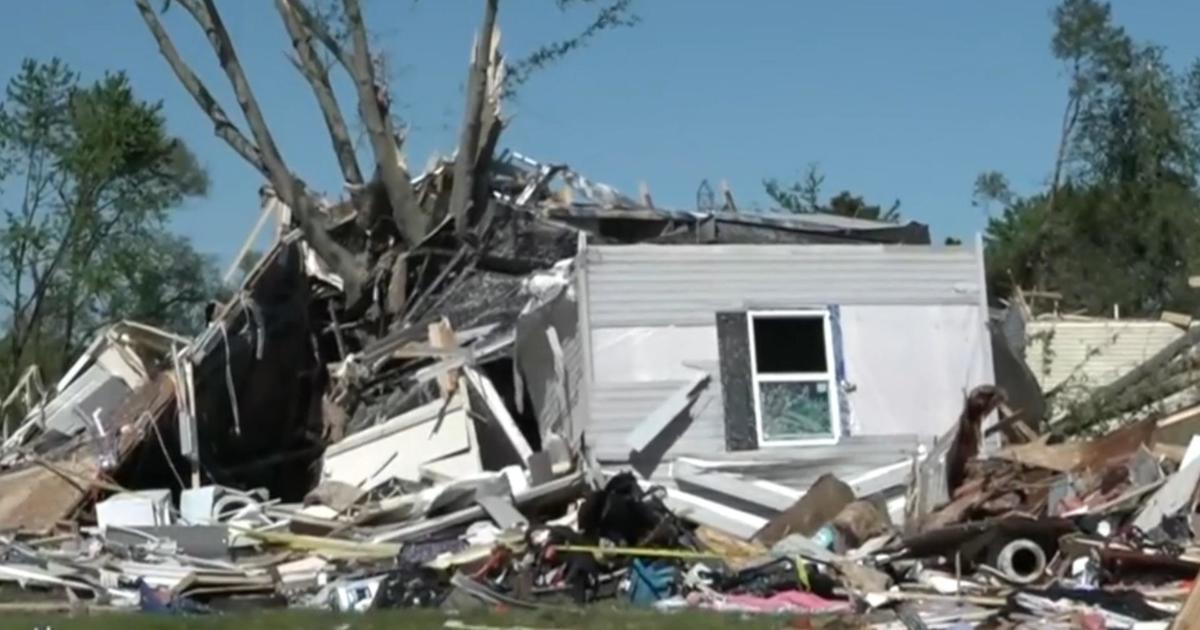
Where did the tornado hit in Michigan? This question has been on the minds of many as tornadoes have touched down in various parts of the state, leaving behind a trail of destruction. From the devastating impact of the recent tornado outbreak to the historical record of these powerful storms, we delve into the geographical distribution, notable events, preparedness measures, and the potential influence of climate change on tornado activity in Michigan.
Tornadoes have struck Michigan throughout its history, with varying degrees of severity. Understanding the patterns and risks associated with these storms is crucial for ensuring community safety and resilience.
Tornado Impacts in Michigan
Michigan has experienced its fair share of tornadoes, with varying degrees of severity and impact on communities. The state’s geographical location and weather patterns contribute to the formation and occurrence of tornadoes, making it essential to understand their distribution and potential risks.
Tornado Data for Michigan
Historical tornado data provides valuable insights into the frequency and severity of tornadoes in Michigan. The following table presents a sample of tornado events recorded in the state:
| Date | Location | Severity |
|---|---|---|
| June 8, 1953 | Flint | F5 |
| April 11, 1965 | Kalamazoo | F4 |
| June 10, 1980 | Battle Creek | F3 |
| May 31, 1996 | Grand Rapids | F2 |
| June 22, 2012 | Monroe | F1 |
The data shows that tornadoes can occur anywhere in Michigan, with varying degrees of intensity. The severity of tornadoes is measured using the Fujita scale, with F5 being the most destructive and F1 being the least.
Geographical Distribution of Tornadoes in Michigan
The geographical distribution of tornadoes in Michigan is influenced by several factors, including prevailing wind patterns and terrain. The state can be divided into two primary regions with different tornado risks:
- Lower Michigan:This region, located south of the Mackinac Bridge, has a higher risk of tornadoes compared to Upper Michigan. The area is influenced by warm, moist air from the Gulf of Mexico, which can contribute to the formation of thunderstorms and tornadoes.
- Upper Michigan:This region, located north of the Mackinac Bridge, has a lower risk of tornadoes. The area is influenced by cooler, drier air from Canada, which reduces the likelihood of severe thunderstorms and tornadoes.
Within Lower Michigan, certain areas are more prone to tornadoes than others. The southwestern part of the state, including cities like Kalamazoo, Battle Creek, and Grand Rapids, has a higher risk of tornadoes due to its proximity to the Great Lakes and the prevailing wind patterns.
Notable Tornado Events
 [/caption]
[/caption]
Michigan has experienced numerous devastating tornadoes throughout its history. These storms have left a lasting impact on communities, causing widespread damage and loss of life. Here are some of the most significant tornadoes to hit Michigan in recent years:The Kalamazoo Tornado of 1980 was an F4 tornado that touched down near Kalamazoo and traveled 30 miles, leaving a path of destruction in its wake.
The tornado killed four people and injured over 100. It caused extensive damage to homes, businesses, and infrastructure, with losses estimated at over $50 million.The Gaylord Tornado of 1997 was an F5 tornado that struck the city of Gaylord, killing four people and injuring dozens more.
In other news, recent rumors surrounding the closure of Dollywood have been circulating. However, a spokesperson for the amusement park has confirmed that did dollywood close? is false, and the park remains open for visitors to enjoy its attractions and entertainment.
The tornado destroyed over 300 homes and businesses, causing an estimated $250 million in damage. It was the deadliest tornado to hit Michigan since 1953.The Grand Rapids Tornado of 2013 was an F1 tornado that touched down in Grand Rapids and traveled for six miles.
The tornado caused significant damage to homes and businesses, but there were no fatalities. It was a reminder of the threat that tornadoes pose to even urban areas.
Lessons Learned, Where did the tornado hit in michigan?
These tornado events have taught Michigan residents valuable lessons about the importance of preparedness and safety. The Kalamazoo Tornado of 1980 led to the creation of the Michigan Tornado Warning System, which provides early warnings to communities in the path of tornadoes.
The Gaylord Tornado of 1997 prompted the state to adopt stricter building codes to make homes and businesses more resistant to tornadoes.The Grand Rapids Tornado of 2013 demonstrated the need for residents to have a plan in place for when a tornado strikes.
These lessons have helped Michigan become better prepared for future tornadoes and have saved lives.
Tornado Preparedness and Response
Michigan’s tornado warning system includes sirens, weather radios, and mobile phone alerts. Sirens are typically activated when a tornado is imminent or has been spotted nearby. Weather radios broadcast tornado warnings and other weather alerts 24 hours a day. Mobile phone alerts can also provide tornado warnings and updates.
To prepare for a tornado, it is important to have a plan in place. This plan should include a safe place to go, such as a basement or interior room on the lowest floor of your home. You should also have a battery-powered radio and flashlights on hand in case of power outages.
Evacuation Procedures
If you are in an area that is under a tornado warning, you should evacuate immediately. Go to your designated safe place and stay there until the tornado has passed.
Emergency Shelters
If you do not have a safe place to go during a tornado, you can go to an emergency shelter. Emergency shelters are typically located in schools, churches, and other public buildings. They are staffed by trained volunteers who can provide assistance and shelter.
Climate and Tornado Frequency
 [/caption]
[/caption]
The potential impacts of climate change on tornado frequency and severity in Michigan remain an active area of scientific research. However, there are several factors that suggest that climate change could lead to an increase in tornado activity in the future.
Meanwhile, crafters can delve into a wide range of mother’s day card craft ideas , including intricate paper flowers, decoupage techniques, and quilling. These hands-on projects provide an opportunity for meaningful expression, allowing individuals to create one-of-a-kind keepsakes that will be cherished for years to come.
One factor is the increase in atmospheric instability. As the Earth’s atmosphere warms, it can hold more moisture. This moisture can then be released as precipitation, including thunderstorms. Thunderstorms are the breeding ground for tornadoes, so an increase in thunderstorm activity could lead to an increase in tornado activity.
Another factor is the increase in wind shear. Wind shear is the difference in wind speed and direction between two levels of the atmosphere. Wind shear is a key ingredient for tornado formation, so an increase in wind shear could lead to an increase in tornado activity.
Historical data and scientific projections both support the likelihood of increased tornado activity in Michigan in the future. A study by the National Oceanic and Atmospheric Administration (NOAA) found that the number of tornadoes in the United States has increased by about 50% since 1950. The study also found that the average intensity of tornadoes has increased by about 10% since 1950.
Climate models project that the frequency and severity of tornadoes will continue to increase in the future. A study by the University of Michigan found that the number of tornadoes in Michigan could increase by as much as 50% by the end of the century.
Preparing for Increased Tornado Activity
The potential for increased tornado activity in Michigan in the future highlights the importance of being prepared. There are a number of things that individuals and communities can do to prepare for tornadoes.
Individuals should have a plan for what to do in the event of a tornado warning. This plan should include a safe place to go, such as a basement or interior room on the lowest floor of a building. Individuals should also have a battery-powered radio and flashlight, and a first-aid kit.
Communities should have a tornado warning system in place. This system should include sirens, outdoor warning systems, and mobile phone alerts. Communities should also have a plan for evacuating people from areas that are at risk of being hit by a tornado.
Community Resilience
In the face of the destructive force of tornadoes, communities across Michigan have demonstrated remarkable resilience in enhancing their preparedness and response capabilities. Recognizing the devastating impact these storms can have, local authorities and residents have joined forces to implement comprehensive disaster preparedness initiatives and establish volunteer organizations dedicated to supporting those affected by tornadoes.
Disaster Preparedness Training
One of the key pillars of community resilience is disaster preparedness training. Community organizations, in collaboration with local emergency management agencies, conduct regular training sessions to educate residents on tornado safety measures. These sessions cover essential topics such as recognizing tornado warning signs, developing evacuation plans, and assembling emergency kits.
In the lead-up to Mother’s Day, families are seeking unique ways to express their appreciation for their matriarchs. For those seeking inspiration, mother’s day card background ideas are readily available online, providing a colorful canvas for heartfelt messages. Similarly, mother’s day card cupcake cases offer a sweet touch, allowing families to bake delicious treats adorned with personalized designs.
For children in kindergarten, mother’s day card kindergarten printable templates simplify the card-making process, fostering creativity and fostering a bond between child and mother.
By empowering residents with knowledge and skills, communities aim to minimize the risks associated with tornadoes and foster a culture of preparedness.
Volunteer Organizations
The spirit of community resilience is further exemplified by the establishment of volunteer organizations dedicated to assisting in tornado response and recovery efforts. These organizations mobilize volunteers to provide immediate aid to affected areas, offering support with tasks such as debris removal, temporary shelter setup, and providing essential supplies to those in need.
The dedication and compassion of these volunteers play a vital role in alleviating the suffering caused by tornadoes and fostering a sense of unity within communities.
Concluding Remarks
As we continue to monitor tornado activity in Michigan, it is essential to stay informed, follow safety guidelines, and support community efforts to enhance resilience. By working together, we can mitigate the impact of these storms and protect our communities from future devastation.
FAQ Resource: Where Did The Tornado Hit In Michigan?
What areas of Michigan are most at risk for tornadoes?
The southern Lower Peninsula, particularly the southwest region, has a higher risk of tornadoes due to its location within Tornado Alley.
What are the warning signs of a tornado?
A rotating funnel cloud, loud roaring noise, and debris swirling in the air are all potential signs of a tornado.
What should I do if I see a tornado?
Take cover immediately in a sturdy building, basement, or underground shelter. Stay away from windows and exterior walls.


Leave a Reply